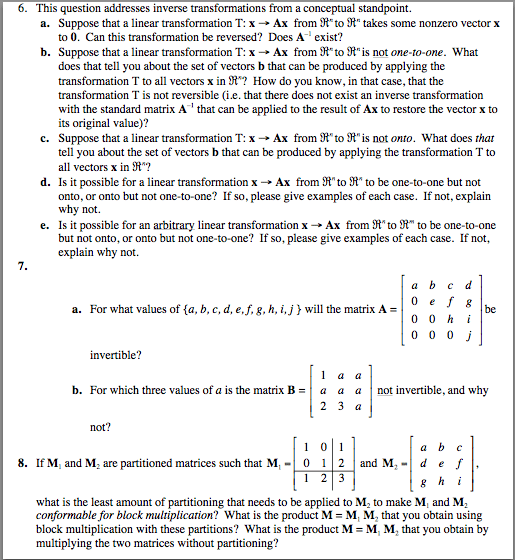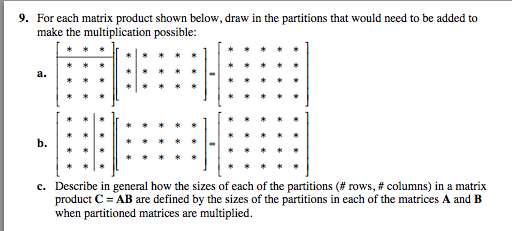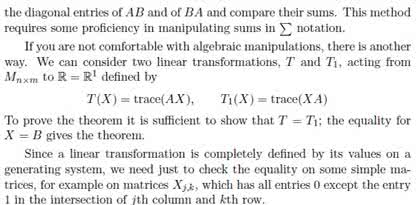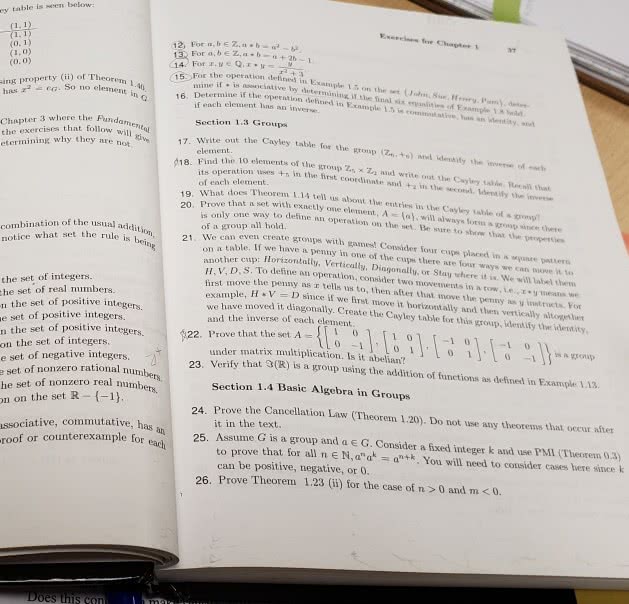Applied Mathematics 1411A/B Chapter 1.8.2: Applied Mathematics 1411A/B Chapter 1.8.: Applied Mathematics 1411A/B Chapter 1.8: Applied Mathematics 1411A/B Chapter 1.: Section 1.8.2

I skipped a bunch because it wasn't relavent to what I was learning in
chapter 4 and frankly it was all just proofs and theorems leading up to
this.
Theorum 1.8.4
If TA: Rn-> Rmand TB: Rn-> Rmare matrix transformations, and if
TA(x) = TB(x) for every vector x in Rn, then A = B.
This has some important consequences because it tells us that there is a
one-to-one correspondence between m xnmatrices and matrix
transformations from Rnto Rmin the sense that every mx nmatrix
produces exactly one matrix transformation (exactly one multiplication by
A) and every matrix transformation from Rnto Rmarises from exactly one
mx nmatrix.
This one matrix that comes from one transformation is said to be the
standard matrix for the transformation.
So basically, each specific transformation can only connect to one matrix
and each specific matrix can only do one transformation to convert a
vector into a new vector space.
SO. To do the specific transformation, there is one matrix that will do it.
That is the Amatrix. That is the standard matrix for the transformation.
For example, for a given linear system
That we want to transform from R2 -> R2in the sense that
The standard matrix to do this transformation for this system is
A=
But how do we find a matrix when we are given a transformation? And
what does that look like?
The standard matrix for a given linear transformation T: Rn-> Rmis given
by the formula
Where e1, e2,... enare the standard basis vectors for Rnin column form (Rn
is the vector space which we're coming from)
Find what the standard basis vectors e1, e2,... en in Rnlook like in Rm
1.
Build the matrix with these new basis vectors in their respective
columns
2.
Thus it follows that the steps to finding the Standard Matrix for a Matrix
Transformation are:
Example
Find the standard matrix Afor the linear transformation T: R2 -> R2defined
by the formula
Recall that a transformation is
just a conversion of one vector
into another and this is done by
multiplying that vector by the
transformation matrix A.
This is getting the A value from the type
of transformation we're looking for
Recall the standard matrix Ais the only matrix that will perform the
desired transformation for the desired linear system
Good Definition!!!
Notes 4
April 19, 2018
6:11 PM
1.8 Matrix Transformations Page 1
Document Summary
Recall that a transformation is just a conversion of one vector into another and this is done by multiplying that vector by the transformation matrix a. This is getting the a value from the type of transformation we"re looking for. I skipped a bunch because it wasn"t relavent to what i was learning in chapter 4 and frankly it was all just proofs and theorems leading up to this. If ta: rn -> rm and tb: rn -> rm are matrix transformations, and if. Ta (x) = tb (x) for every vector x in rn, then a = b. This one matrix that comes from one transformation is said to be the standard matrix for the transformation. So basically, each specific transformation can only connect to one matrix and each specific matrix can only do one transformation to convert a vector into a new vector space. To do the specific transformation, there is one matrix that will do it.







